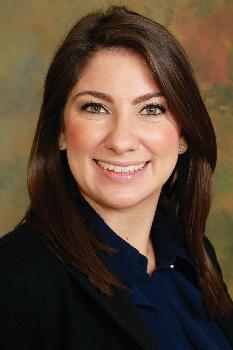
3 minute read
Legal Aid SocietyTeaching Tips
Keeping it Simple – the GAL’s Role When Residential Treatment is Needed
uardians ad Litem (GALs) are tasked with an incredible responsibility – advocating for the best interests of a child that’s been the victim of abuse, abandonment, or neglect. GALs serve children whose childhoods were fractured, but not beyond repair. A Guardian ad Litem must decipher what is best for this child by meeting with the child, reviewing medical documents and school records, and speaking with the child’s case management team, caregivers, parents, and service providers. It can be a daunting but necessary task to ensure each child’s unique needs are met.
This is especially true for our children that may require residential treatment, which is a placement specifically intended for the observation, diagnosis, or treatment of a mental health diagnosis. The Florida Legislature delineates the procedure for such intervention in section 39.407(6), Florida Statutes.
First, it is important to recognize not all children with mental health needs require residential treatment. The child will receive appointment of a Guardian ad Litem and an Attorney ad Litem (AAL), also known as Special Needs Counsel. Second, a suitability assessment will be completed by a qualified evaluator (QE) to determine if the child meets the three-part criteria required for residential treatment.

To meet this criteria, the child must have an emotional disturbance severe enough to require treatment in a residential treatment program. This is defined in sections 394.492(5)-(6), Florida Statutes, and strictly excludes a “temporary response to a stressful situation.” As you can imagine, being removed from your home, school, and friends may create a stressful response that will likely dissipate as the child settles into their new environment.
Second, the child must be reasonably likely to benefit from treatment. If a child has cognitive deficits or other diagnoses that would interfere with their ability to understand and benefit from treatment, residential treatment may not be suitable for the child. Lastly, there must be a determination that an appropriate, less restrictive alternative to residential treatment is unavailable. The QE will be provided with a host of documentation on the child including medical records, school records, history of baker acts, and placement disruptions. The QE will also speak to the child, the child’s case management team, caregiver, GAL, AAL, and any-
Gone else that would like to provide input on the child. If the child has not received services to address their emotional disturbance or there is not sufficient documentation to determine if other treatment modalities and placement options have been implemented, the QE is not likely to recommend residential treatment. Additionally, if services and/or less-restrictive placements have stabilized the child, residential treatment may not be needed.
Once the assessment is completed, the QE will recommend one of the following: placement in a psychiatric residential treatment center (RTC) which is the most strictive level of care; placement in a therapeutic group home (TGH) which is also restrictive but offers a home-like setting and allows the child to attend school in the community; non-residential placement which means any other less-restrictive placement alternative; or “a recommendation could not be rendered.” If the suitability assessment recommends a RTC or TGH, the Court will hold a hearing on the matter and is bound by strict timelines per Florida Rule of Juvenile Procedure 8.350. This rule also requires the GAL to file a written report addressing their recommendation regarding placement of the child and the child’s wishes regarding the same. This report can be brief but must be filed prior to the hearing moving forward.
As the GAL, we have valuable information that should be shared at every stage of the game, our advocacy doesn’t end once a child is placed in residential treatment. Within 10 days of the child’s admission, the facility must create a treatment plan for the child. Likewise, the facility must assess the child’s progress toward that treatment plan every 30 days from the date of admission. Additionally, an assessment of the appropriateness of the placement will continue until the child is discharged. A new suitability assessment must be completed within 60 days of admission and will occur on an on-going basis every 90 days thereafter. The GAL should engage in on-going communication with the child, participate in treatment planning, provide input for each suitability assessment, and deliver updates to the court to ensure a successful and swift outcome for the child.
For more information, please contact: Marie Priebe, Guardian ad Litem Attorney, at (407) 841-8310 or email: mpriebe@legalaidocba.org. For more information on how to become a financial donor or help with our fundraising efforts please contact Donna Haynes, Director of Development at (407) 515-1850 or email: dhaynes@ legalaidocba.org.










